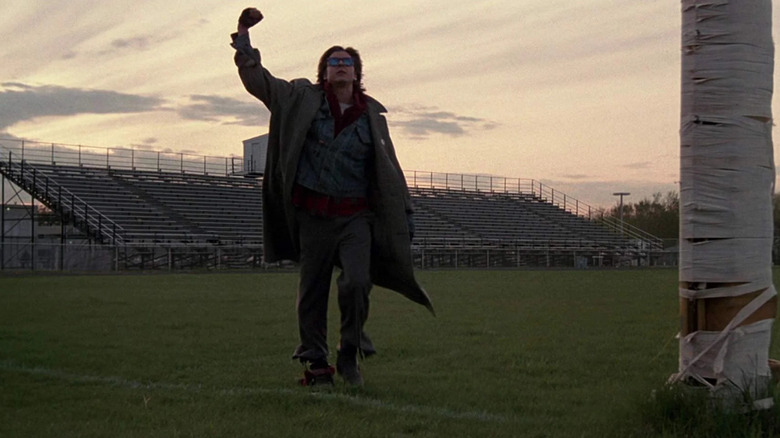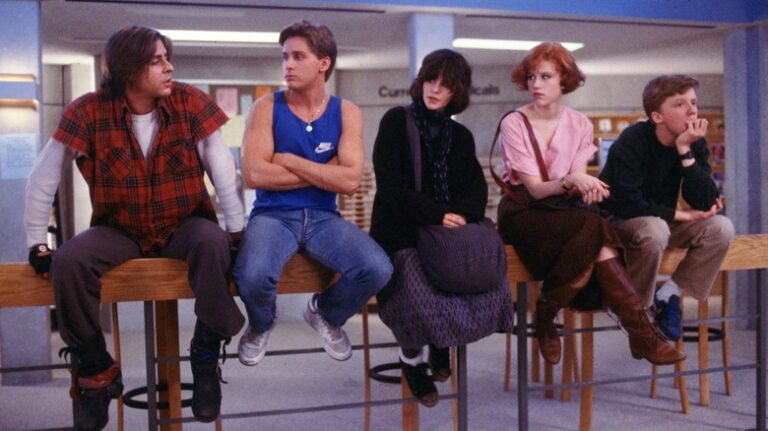Universal Pictures
If you’ve seen John Hughes’s “The Breakfast Club” — and if you haven’t, you really should because it’s one of those brilliant and ageless ’80s classics — it probably doesn’t catch you by surprise that it was originally written as a stage play. The entire movie takes place in a high school (in a library, corridors, classrooms, and a gymnasium) with the plot of five archetypal high schoolers (the rebel, the nerd, the jock, the outcast, and the popular girl) stuck in detention for an entire day on a Saturday. Initially, writer-director Hughes wrote the teen comedy drama to take place in a single classroom — a quality that’s palpable from the get-go. It’s likely why it is one of the best character-driven movies about teenagers, but Hughes’ reason for writing it as a play may be different from what you think.
In an interview with The Post (via Yahoo), the movie’s producer, Adam Fields, revealed why Hughes originally pitched it to him that way:
“John Hughes was a nobody when he sent me that script. He sent it to me as a play, which I don’t know if I really want to talk about that, but it all took place in a classroom, and I said, ‘Why did you write a play? We’re in the movie business.’ He goes, ‘Well, you know, I haven’t really worked with actors before, so I thought a play would be a good idea.’ I go, ‘No. We’re going to make ‘Sixteen Candles’ and we’re going to make ‘Breakfast Club’ as movies.'”
Hughes had a gift for depicting teenagers like nobody had before him

Universal Pictures
“The Breakfast Club” was one of several coming-of-age comedies from Hughes that redefined the genre and heavily influenced all the similar films that came after. He was in his 30s when he wrote it — alongside his directorial debut, “Sixteen Candles,” — but managed to touch on something profound, rebellious, and deeply intimate about youngsters coming of age, which wasn’t how they’d normally been depicted in movies up until that point.
Hughes treated his characters (and the young actors who played them) as adults, giving them credit without judgment or prejudice of who they seemed to be. “The Breakfast Club” in particular dug into that with a sharp, if comedic, tone that allowed the characters to be serious and silly at the same time for their age. Despite being quite different from each other socially and class-wise, they slowly develop a bond and fondness for each other that seemed simply impossible at the start of their detention.
Hughes’ later movies, like “Pretty in Pink,” “Ferris Bueller’s Day Off,” and “Some Kind of Wonderful,” were all variations of that same teen experience at their core. But personally, I think none of them matched the potency and sincerity of “The Breakfast Club.” That feature was the quintessential blueprint for Hughes (and the many other directors inspired by his work), and he used that template to build new stories on. However, once the ’80s ended, he moved on to more family-friendly films (such as “Beethoven” and the Christmas classic “Home Alone”) that focused more on sweet and mischievous kids rather than defiant and introspective teens.
Images are for reference only.Images and contents gathered automatic from google or 3rd party sources.All rights on the images and contents are with their legal original owners.

